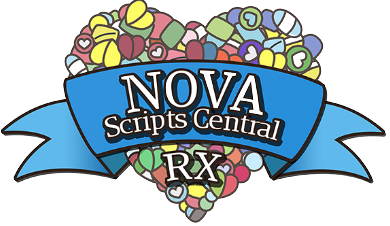Amazon, the world’s largest online retailer, made headlines in early 2018 for entering into a partnership with Berkshire Hathaway and JP Morgan. The three companies are planning to provide an alternative form of healthcare for their US employees. Although this partnership is only in its infancy, Amazon is already trying to establish itself in the healthcare sector. The first step in this process appears to target the non-prescription drug market. Amazon has introduced its own line of generic over the counter medications called Basic Care. Over the counter medications are also known as OTC’s or non-prescription drugs. They are medications that can be purchased without a prescription and are considered to be safe and effective when taken as directed. Amazons move into the non-prescription market is important but we should consider the impact this will have on patient healthcare.
The Basic Care line up covers the most common OTC medications found in a local pharmacy but the lineup is limited. Most medications are available in different strengths, package sizes, and formulations. However, the Basic Care line up is only available in common doses and is limited in package size and formulation. For example, Aspirin, commonly used for fever, pain, inflammation and prevention of heart attacks, is commonly available in 81 mg, 325 mg, and 500 mg. The Basic Care Aspirin is currently only available in 325 mg strength at a count of 500 tablets per bottle. This limits patient choice, and requires the patient to purchase higher quantity of medication. This may help bring down the cost of the drug, but it may limit the opportunity to substitute other medication if the need may arise.

Consumers might consider making the switch to the Amazon product line for reasons of cost and convenience. Having generic medications available can certainly bring down the cost of medications. For example a bottle containing 500 tablets of ibuprofen, a pain medication, costs $6.98 at Amazon, whereas the same amount can cost twice as much at CVS, Walgreens, or RiteAid. This reduction in cost can be helpful to low-income individuals who are struggling to manage their health and pay their bills. Add to that the convenience of having the medication shipped to your doorstep, then it’s easy to see why consumers would be interested in these products. This is especially important to older patients, and patients with disabilities who may find it difficult to visit their pharmacy. Amazon can have the medication delivered to patients within two days without additional cost.

The convenience of having the medication shipped can be very beneficial if the patient wants to stock up on medication in advance. However, this may not work out so well for a patient who is suffering from an acute illness and needs the medication right away. In the case of the common cold or a fever it is important to start therapy as soon as symptoms appear. The longer the patient waits, the more likely it is that their illness may worsen or may take longer to recover. This can result in loss of productivity or absence from work, which can lead to loss of valuable time and income. If the patient’s health starts to worsen, then it can also prove to be burdensome on the healthcare system. Something that was easily treatable with OTC medication could now require expensive prescription medication or a hospital stay, which leads to increased medical costs.
Although OTC medication have been available online for some time, most patients still get their medications from a local retail pharmacy, where a professional pharmacist is readily available for a free consult. The benefit of this type of interaction is that the pharmacist can help patients choose the best medication 
Whether a patient chooses to purchase their OTC medication at the local pharmacy or they opt to purchase them online is up to them, what is important is that they are buying a medication that effectively treats their ailment. There are a number of resources that consumers can turn to for guidance. A good start is the medication label itself, which is found on the back of the box. Reading the medication label carefully can give important information such as purpose of medication, indication, warnings, and directions on how to take the medication. Another resource that consumers can turn to is Know Your OTCs, a reliable online resource that can provide up to date information and give recommendations based on symptoms. The Food and Drug Administration (FDA), is another great source for information on understanding OTC medication.
The addition of the Amazon brand into the OTC market should provide some cost savings, convenience, and access to medication. It can have the potential of providing access to medications and fill gaps in therapy. However, from a healthcare point of view, its important that patients are getting the right medication. Therefore, it is important for the patient to have a conversation with their healthcare professional before they start a new medication. Amazon’s move into the healthcare sector has started with a small step, but it is clear that they will have a major impact.

